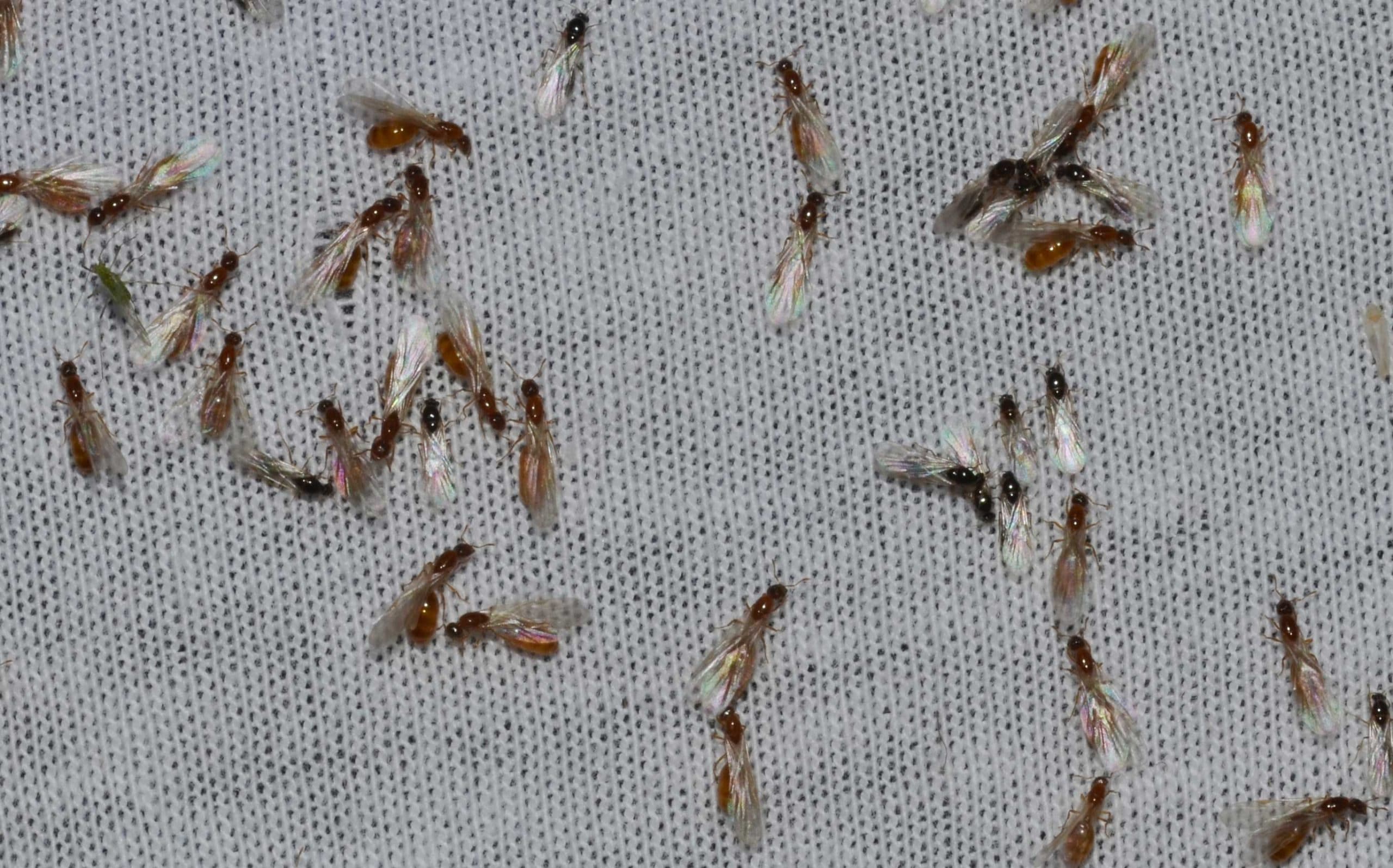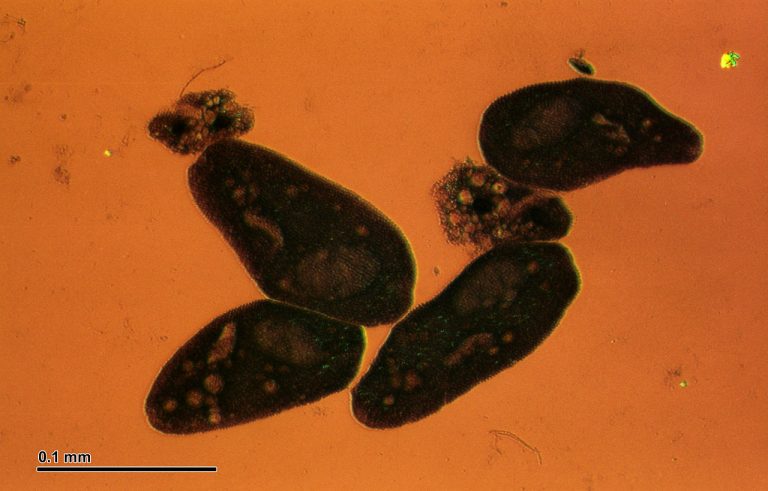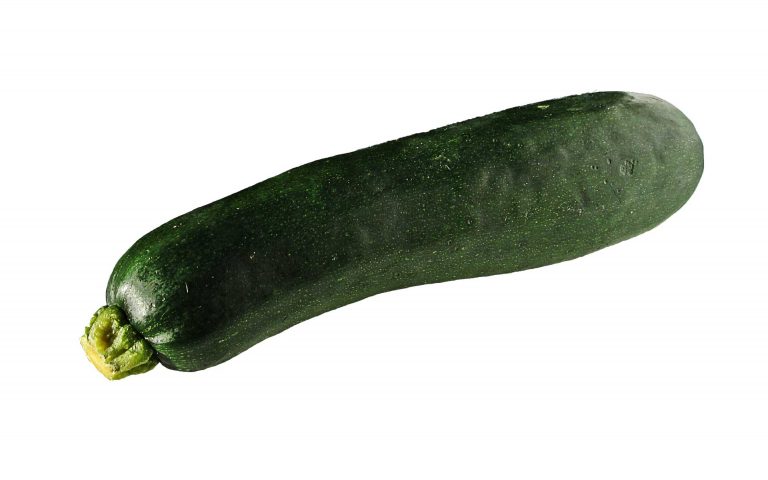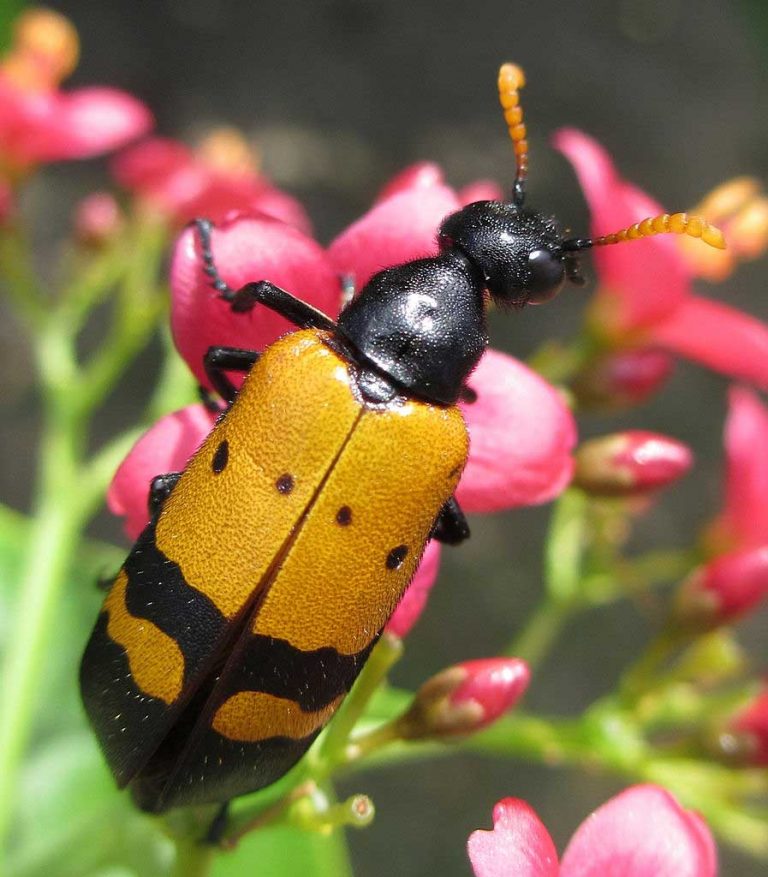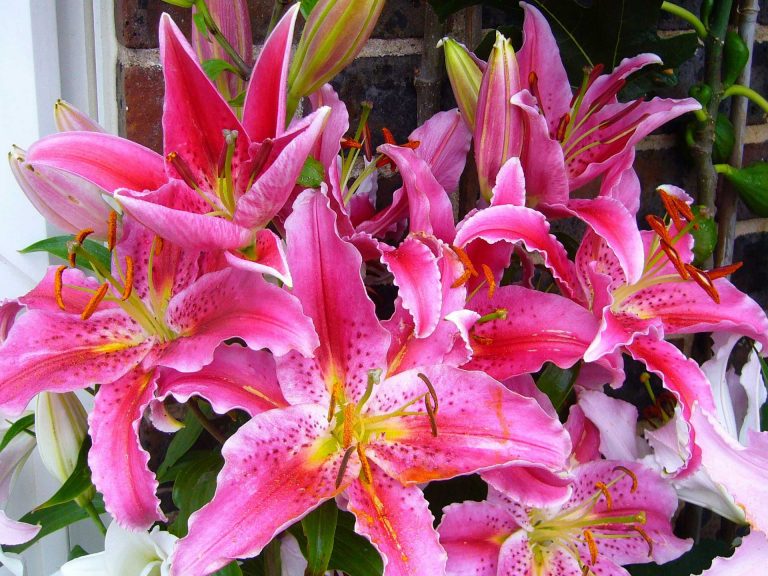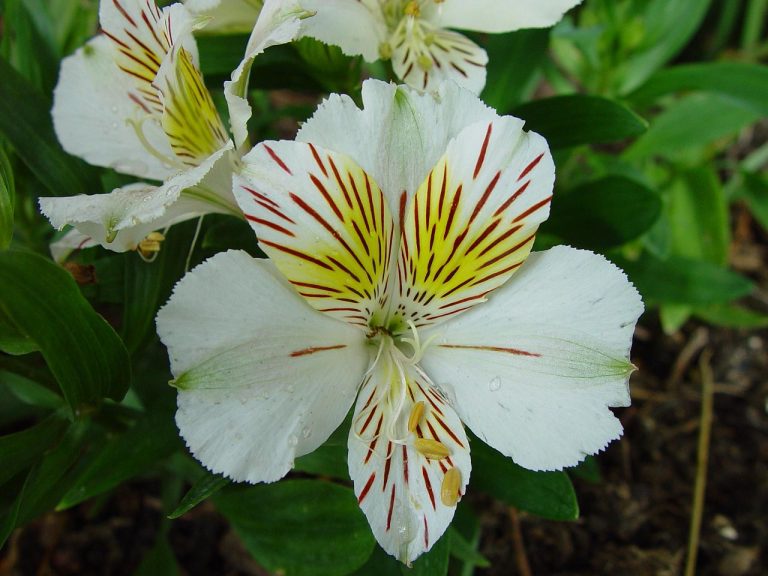Thief Ants
Scientific Classification
| Kingdom: | Animalia |
| Phylum: | Arthropoda |
| Class: | Insecta |
| Order: | Hymenoptera |
| Family: | Formicidae |
| Genus: | Solenopsis |
| Species: | S. molesta |
| Binomial name: | Solenopsis molesta |
Solenopsis Molesta is another name for thief ants., The common name “Thief Ants” arises from its characteristic of making nests near established nests of other ants with the sole intention of stealing their food. Since they are fascinated by grease, they are famous as grease ants as well.
Though the Pharaoh and the Thief Ants may share some features of resemblance, there is various thief ant that displays certain clear features that assure proper reorganization. Pharaoh Ants possess antennae with 12 segments, terminating with a 3-segmented club, while the thief ant’s antennae have only 10 segments, terminating with a 2-segmented club. Thief Ants are more likely to forage using definite trails, whereas Pharaoh ants tend to change trails once the water and food sources are built.
Anatomy
Length of Solenopsis molesta ranges from 0.5mm (1/32 inch) to 3mm (1/8 inch) and their skin color can be brown or yellow. The abdomen and thorax of S. Molesta are connected with by segmented petiole. Antennae of these ants are generally segmented into 10 parts which gradually end in the large sectioned clubs. The Size of eyes is small and they have little stringers on their abdomen. Worker thief ants have giant jaws that help them to carry food to and from their colony.
Habitat and Distribution
The S. Molesta ants are endemic to the United States and more common in the east coast and the middle states of the US.
Solenopsis Molesta are extremely versatile. They can adapt to life anywhere, and survive. They establish their nests in the cavities, below floorboard, in homes, under rocks, in the soil and in rotten wood. And if they fail to locate food, they shift to another colony. The size of their nest is generally bigger than their size and have many tunnels. The tunnel acts as a medium to communicate to their neighbor’s nest to facilitate a constant and reliable food source.
Behavior
The population of worker ant in the S. Molesta colony can grow from some hundreds to thousands. Like other ant colonies, this colony also contains a large number of queens. The type of location decides the thief ant population… Colony with ready and constant food source have less number of worker ants because they do not need them to forage for food.. Because of their tiny size, they can build their colony at anyplace. They can stay in homes without the occupants not even realizing that they have an ant infestation on their hands.. Solenopsis Molesta ants are a pervasive indoor pest. Their tiny size helps them to get into sealed eatable packages. Thief Ant workers mix with other ant colonies and then feed on the larva of other ants. They eat anything from dead animals to plants, and travel miles to forage for food. Once they locate a food source, they will construct the trail from food source to the colony.
Diet
Solenopsis Molesta ants rely on a high protein rich diet. They eat cheese, meats, nuts, greasy food, sweet material and peanut butter. Worker thief ants can be a nuisance for kitchens, because of their tiny size. Outdoors, these ants forage on rodents and dead insects. They can even transmit pathogens and bacteria to human eatables; therefore posing a potential danger to humans. These ants also feed on premature insects and ants.
Reproduction
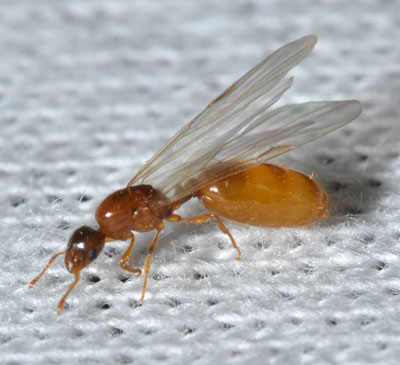
Thief Ant – Photo by: Andy Reago & Chrissy McClarren
Solenopsis Molesta have queen ants generally 4mm-5 mm bigger than the worker ants. The mating season starts from the month of July and stretches till late Monsoon. Mating happens in the air, while flying. When a queen finds a perfect place for her colony, she flies with a Solenopsis Molesta Worker Ant to mate. Apparently, the queen ant can lay 27 to 387 eggs a day, or an average; 105 egg every day. An egg takes 52 days to become a fully mature worker. Child Solenopsis Molesta stays in the larval stage for 21 days when the weather is appropriate.
Problems to Humans And Control
Thief ant scan be a nuisance in human dwellings. It is very difficult to locate these ants, because of their remote nesting habit and small size. These ants always move away from their colony and travel miles in search of food. Their small body size helps them to get into spaces that bigger sized insects cannot reach. The simplest way to find their colony is by following their traits. These ants are not attracted towards the ordinary ant baits and traps; therefore it is very hard to clear their infestation.
Follow The Steps Given Below To Eradicate Thief Ants
Inspection
To treat Solenopsis Molesta infestation completely, it is crucial to inspect the house systematically and carefully from the inside and the outside for compatible nesting areas.
Outdoors, these ants build nests around walkways, under rocks, in the cavities of rotten wood and in the soils.
While inside the house, you can locate the nest in the wall cracks, cabinet fissures and under countertops and baseboards.
Treat Outdoor Ant Mounds
Outdoor ant mounds can be treated by drenching the mound with Cynoff insecticide or Demon WP with the help of gallon sprayer.
Spray Outdoor Perimeter
Demon WP or Talstar spray is an excellent barrier against Solenopsis molesta ants around the house. Spay these insecticides using a gallon sprayer. Spray can remove the existing ones and prevent the new ants’ entry as well.
Indoors: Baiting is the Best
Residual spray inside the house creates stress in the colonies. This often results in splitting main colonies into multiple sub- colonies, resulting in a decrease in the the ant infestation.
Baiting indoors is an effective and efficient method. This method is highly preferred as compared to dusting or spraying. The slow-acting bait works exclusively to control the thief ants that are highly attracted towards greats and protein baits.
Protein Baits for Thief Ants
- Maxforce Ant Bait Granular-.
- Advance Liquid Ant Bait-.
- Advance 375A Select Granular Ant Bait-
- Niban Fine Granular Bait (1 pound.).
Dust Treatments: You can destroy nests established under baseboards or in the wall cavity with the help of acid dust. Delta Dusta is an excellent solution. It is water proof and hence will not flow with water. It can be applied with a hand duster.
Additional Methods for Thief Ant Prevention & Control
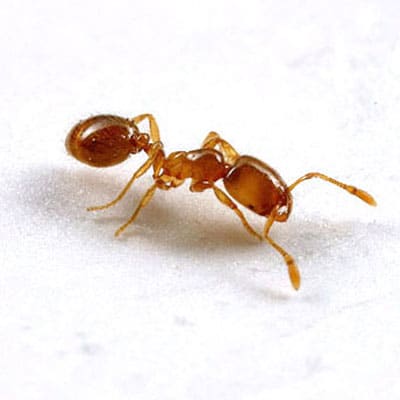
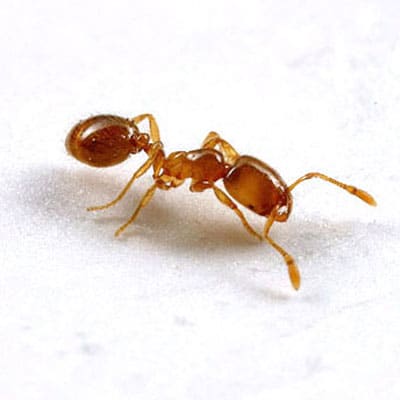
Thief Ant – Photo by: Alex Wild
Once you have used all the above methods and appropriate chemicals, try the following additional methods to help you in your efforts at preventing and controlling the infestations:
- Introduce good sanitary practices into your regular habit
- Try to limit your cooking and dining area. Ensure they are cleaned regularly.
- Fill the cracks and gaps in the foundation, window frames, baseboards, door frames and other materials to restrict ant entry ways.
- Material that act as a potential attraction to ants should be removed from your surroundings as far as possible. This may include stones, bricks, heavy mulch, debris, piled lumber, leaf litter. These materials should be kept as far away as possible.
- Reduce the size of shrubs, trees and vegetation that can serve to create an ant trail to your home.
- Fix that faulty faucets and leaky pipes.

Having discovered a fondness for insects while pursuing her degree in Biology, Randi Jones was quite bugged to know that people usually dismissed these little creatures as “creepy-crawlies”.

